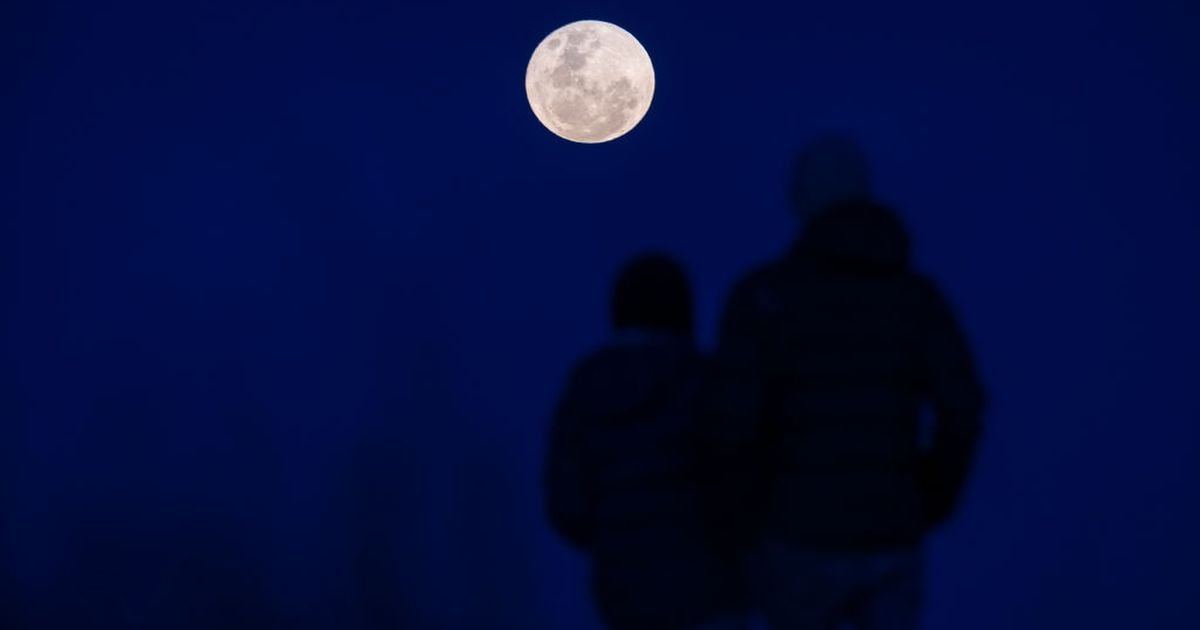'Exceedingly rare' super blue moon to be visible across Ireland tonight - How to see the lunar event
We have all the info you need on exactly how you can catch the super blue moon at her brightest tonight

Irish stargazers will be treated to a rare lunar spectacle tonight, as a bright super blue moon will be visible in the night sky.
A blue moon happens once every two or three years on average, according to NASA. But to have a blue moon occur at the same time that the full moon is a supermoon is "exceedingly rare," says David Moore, Editor of Astronomy Ireland magazine.
In fact, it is not expected to happen again until 2037, so members of the public are being urged to gaze up at the sky on Monday evening, as August’s rare super blue moon takes centre stage. Here's everything you need to know about the celestial delight.
READ MORE: Heavy rain and thunder ahead as remnants of Hurricane Ernesto set to blast Ireland
READ MORE: Father and son arrested after two men allegedly stabbed over land dispute
What is a supermoon?
The Moon travels around our planet in an elliptical orbit, or an elongated circle, with Earth closer to one side of the ellipse. Each month, the Moon passes through the point closest to Earth (perigee) and the point farthest from Earth (apogee). When the Moon is at or near its closest point to Earth - about 226,000 miles away - at the same time as it is full, it is called a “supermoon.”
During this event, because the full moon is a little bit closer to us than usual, it appears especially large and bright in the sky.
Because the Moon’s orbit wobbles and differs depending on where the Sun and Earth are in their orbits, the exact distance of these closest and furthest points varies. But the Moon can look up to 14 per cent bigger and 30 per cent brighter at perigee than apogee.
What is a blue moon?
There are two types of blue moons: seasonal and monthly. The one appearing on Monday will be of the seasonal variety.
A seasonal Blue Moon is the third Full Moon of an astronomical season that has four Full Moons. A monthly Blue Moon is the second Full Moon in a calendar month with two Full Moons.
The historical origins of the term and its two definitions are shrouded in a bit of mystery and, by many accounts, an interpretation error.
Some believe that the term “blue moon” meaning something rare may have originated from when smoke and ashes after a volcanic eruption turned the Moon blue.
Others trace the term's origin to over 400 years ago—folklorist Philip Hiscock has suggested that invoking the Blue Moon once meant that something was absurd and would never happen.
According to astrology, the blue moon is a time of intensified emotions and energy. Some believe it to be a perfect time to work on growth and change within your life, as it is a time for second chances and redemption.

How to see the super blue moon
This Supermoon will be visible on Monday (August 19) and will appear full in the sky for three days.
So long as it's not too cloudy, the Royal Observatory at Greenwich says anyone should be able to see the "unmistakable white orb in the sky" this week.
If skies are clear, binoculars and backyard telescopes may enhance your viewing, although the moon can be observed with the unaided eye so long as it is a clear night with little cloud coverage.
Your best bet of catching the lunar display is getting out of city centres and heading somewhere with less light pollution away from buildings that might obstruct your view.
The very bright moon shouldn't be hard to find, but if you want to view this moon without waiting for it to reach its meridian, head to higher ground.
The ideal time to watch is just as the Moon is rising. From Ireland this happens at 9.03pm tonight and 9.15pm tomorrow night.
"The best time to watch is at Moon rise, which is the same time the Sun sets, when a further effect, called 'The Moon Illusion' kicks in which can make the Moon 'look' even bigger to the human eye/brain combination," said Mr Moore.
Get involved
Astronomy Ireland are urging everyone to get out and see the SuperMoon this week, especially on Monday, but the view on Tuesday will almost be as good too.
"Full Moons at this time of year are extremely low in the sky which is perfect for photos lining up landmarks, people, events for the whole night!" said Mr Moore.
"So we especially want people to get creative Monday AND Tuesday evenings from sunset on and catch the very rare SuperMoon Blue Moon from Ireland and send their photos in for publication in Astronomy Ireland magazine where they will be archived for all time in the National Libraries of both Ireland and Great Britain, as well as being shared with thousands of Irish readers across the island!"
Join the Irish Mirror’s breaking news service on WhatsApp. Click this link to receive breaking news and the latest headlines direct to your phone. We also treat our community members to special offers, promotions, and adverts from us and our partners. If you don’t like our community, you can check out any time you like. If you’re curious, you can read our Privacy Notice.


































